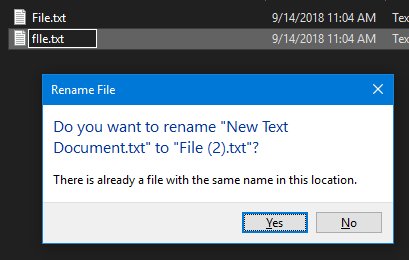I know, you might be thinking that by using Windows Subsystem For Linux terminal, you might be able to do so. But let me remind you that at the end of the day, Windows will be handling this file naming integration. So, that does not make any sense at all. Case sensitivity for folder names on Windows 10 can be enabled on a per-directory basis thanks to the NTFS system feature. You can enable Case Sensitive Attribute for Folders in Windows 10. This post shows how to enable or disable Case Sensitive Attributes and check if is active in a location.
Enable Case Sensitive Attribute for Folders in Windows
This will work from Windows 11 and Windows 10. Microsoft introduced a new way to enable NTFS support to treat files and folders as case sensitive and that too on a per-folder basis. In simple words, we will not receive any error as shown in the picture above and we will be able to save files and folders by names like File.txt, file.txt, FILE.txt, FilE.txt, etc. in a common location. To make the changes we use a built-in utility called FSUTIL.exe.
1. Query Case Sensitive Attribute of a Folder
First of all, start by opening a Command Prompt with Administrator level privileges. To do that, Press WINKEY + X button combo or right-click on the Start button and click on Command Prompt (Admin). Click on Yes for the UAC or User Account Control prompt that you get.
Now, type in the following command and hit Enter.
Make sure that you replace
2. Enable Case Sensitive Attribute of a Folder
Press WINKEY + X button combo or right-click on the Start button and click on Command Prompt (Admin).
Now, type in the following command and hit Enter.
Make sure that you replace
3. Disable Case Sensitive Attribute of a Folder
Press WINKEY + X button combo or right-click on the Start button and click on Command Prompt (Admin).
Now, type in the following command and hit Enter.
Make sure that you replace
This will disable the Case Sensitive Attribute of a Folder on your used path. All the best!

